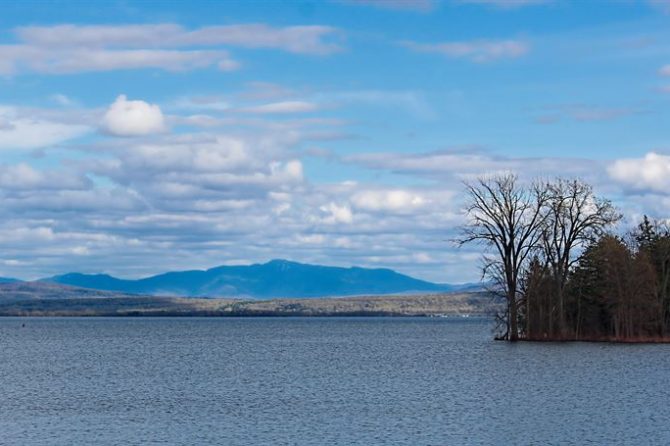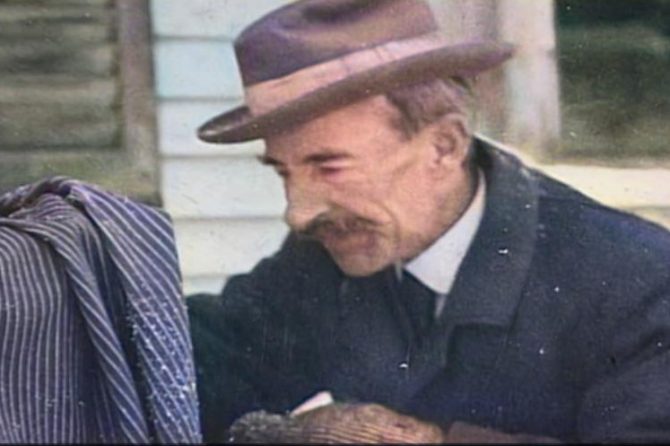You've likely seen pictures of Vermont's iconic covered bridges spanning picturesque rivers and streams. If you're driving around Vermont, you can't help but see them just about everywhere…or so it seems! These charming structures have become synonymous with the state's rural landscape, but have you ever wondered why they've endured for so long? It's not just their quaint appearance that's kept them standing.
From innovative engineering to passionate preservation efforts, there's more to these bridges than meets the eye. As you explore the reasons behind their longevity, you'll uncover a fascinating tale of history, community pride, and architectural ingenuity that continues to shape Vermont's identity today.
Key Takeaways
- Covered bridges are protected from harsh New England weather by their roofs, extending their lifespan.
- Vermont communities actively preserve these bridges through local societies and restoration efforts.
- The use of local timber in construction facilitates easier maintenance and repair over time.
- Covered bridges contribute significantly to Vermont's tourism industry, incentivizing their preservation
- The bridges' innovative design and engineering allow them to withstand floods and harsh conditions.
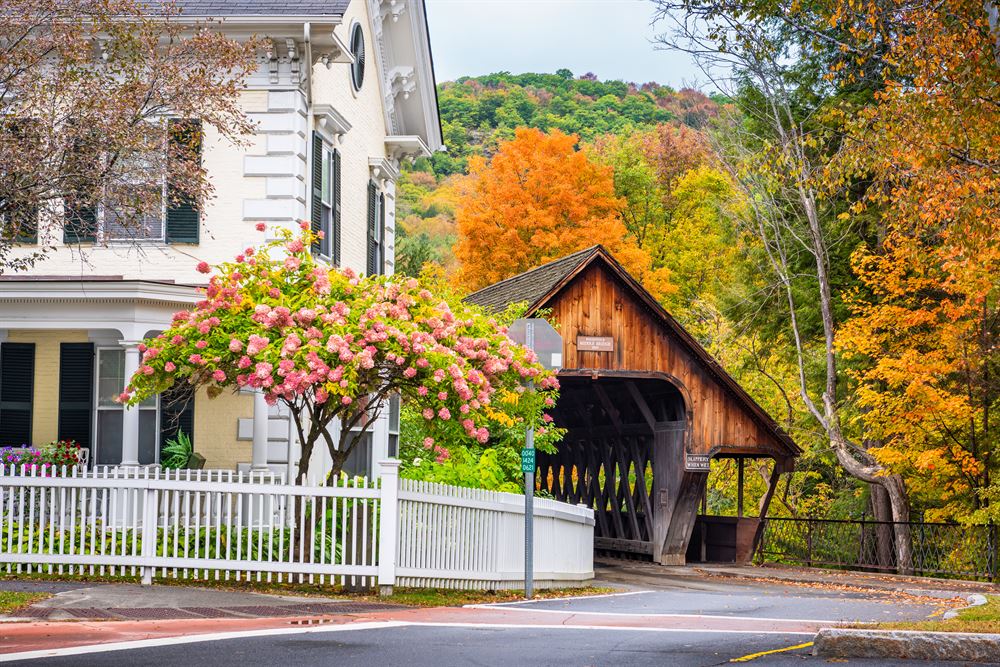
Vermont's Covered Bridge Legacy
While many states boast covered bridges, Vermont's collection stands out as one of the most impressive and well-preserved in the nation. You'll find over 100 of these historic structures dotting the Green Mountain State‘s landscape, each telling a unique story of Vermont's rich past.
As you explore these architectural marvels, you'll become part of a community that cherishes its heritage. These bridges aren't just relics; they're living connections to the Vermont state's history. You'll discover that Vermonters have long taken pride in maintaining these structures, passing down the tradition through generations.
Not just for pretty pictures

You'll learn that covered bridges served practical purposes beyond their picturesque appearance. The roofs protected the wooden trusses from the harsh New England weather, extending their lifespan significantly. This ingenuity reflects the resourcefulness of your ancestors, who built to last.
Today, you're not just admiring these bridges; you're participating in their ongoing story. By visiting and appreciating these structures, you're contributing to their survival for future generations. You're part of a collective effort to preserve Vermont's unique cultural identity, one bridge at a time.
Architectural Marvels of Bygone Era
How did Vermont's covered bridges become architectural marvels that have endured the trial of time? You'll find the answer in their innovative design and the craftsmanship of our ancestors. These bridges aren't just functional; they're a tribute to the skill and ingenuity of early American builders.
As you explore these structures, you'll notice the intricate truss systems that distribute weight evenly, allowing the bridges to span greater distances than uncovered bridges of the era. The roof and sidewalls protect the wooden trusses from the elements, significantly prolonging the bridge's lifespan. You'll appreciate the clever use of local materials, like indigenous timber, which made repairs and maintenance more accessible for our communities.
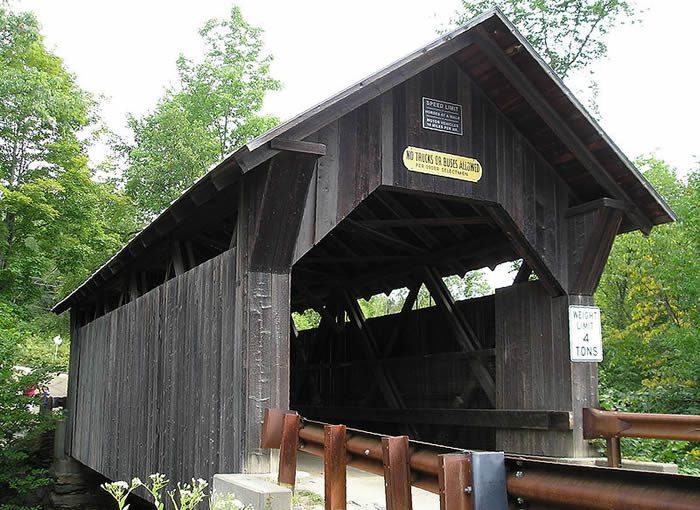
When you step inside a covered bridge, you're transported to a bygone era. The craftsmanship is evident in every joint and beam. These bridges weren't just built; they were engineered with precision and care. They've withstood floods, harsh winters, and the trial of time, serving as a link to our shared past and a symbol of Vermont's enduring spirit. When it comes to “spirit”, there's at least one allegedly haunted Vermont covered bridge, that is well known!
Preservation Efforts and Local Pride
Vermonters have stepped up to preserve their covered bridges, rallying around these iconic structures with a fierce sense of local pride. Communities across the state have formed preservation societies and volunteer groups dedicated to maintaining these historical treasures. They're not just protecting wood and nails; they're safeguarding a piece of Vermont's soul.
You might be able to join in on this collective effort. Some towns host annual festivals celebrating their covered bridges, where you'll connect with like-minded enthusiasts and learn about restoration techniques. You might even find yourself wielding a paintbrush or hammer alongside your neighbors during community workdays.
State agencies and private organizations have also recognized the importance of these structures. They've implemented grant programs and educational initiatives to guarantee the bridges' survival for future generations. You'll notice informational plaques at many sites, sharing the bridge's history and significance.
Tourism and Economic Impact
Covered bridges have transformed into major tourist attractions, drawing visitors from across the globe and boosting Vermont's economy. You'll find these charming structures featured prominently in tourism brochures and websites, inviting you to experience a slice of American history.
When you visit Vermont's covered bridges, you're not just sightseeing; you're contributing to local economies. Small towns benefit from your patronage of nearby restaurants, shops, and accommodations. You might even join guided tours or attend festivals celebrating these iconic structures, further supporting community businesses.
As a visitor, you'll discover that covered bridges offer more than just photo opportunities. They're focal points for community gatherings and events, fostering a sense of belonging among locals and tourists alike. You can participate in bridge-themed art workshops, historical reenactments, or even picnics under these wooden wonders.
The economic impact extends beyond direct tourism. Covered bridges enhance Vermont's brand identity, attracting businesses and residents who value the state's commitment to preserving its heritage. By exploring these bridges, you're not just witnessing history; you're actively participating in Vermont's cultural and economic tapestry.
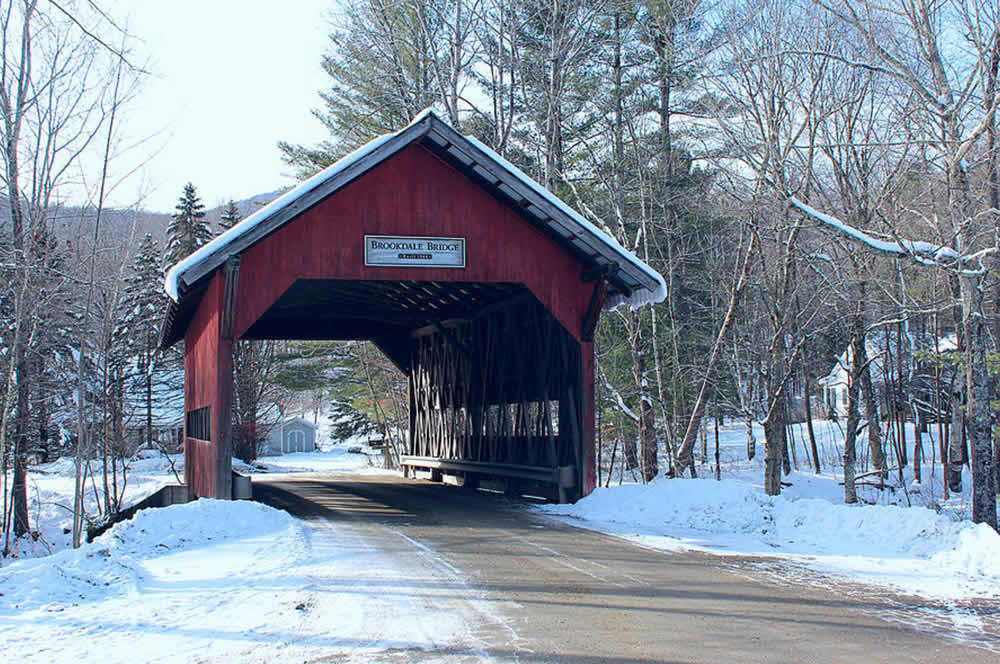
Engineering Feats in Rustic Design
Behind their quaint charm, Vermont's covered bridges hide remarkable engineering ingenuity. You'll be amazed at how these seemingly simple structures have withstood the trial of time. The wooden trusses, carefully designed and assembled, distribute weight evenly, allowing the bridges to span impressive distances without modern materials.
As you explore these architectural marvels, you'll notice the attention to detail in every joint and beam. The builders cleverly used interlocking timbers and wooden pegs, creating sturdy connections that flex with temperature changes and heavy loads. You're witnessing living history, where each bridge tells a story of skillful craftsmanship.
The roof, more than just protection from the elements, plays a vital role in the bridge's longevity. It shields the deck and trusses from moisture, preventing rot and extending the structure's life by decades. You'll appreciate how the designers incorporated ventilation, allowing air to circulate and keep the timbers dry.
When you visit these bridges, you're not just seeing quaint relics; you're experiencing the intersection of form and function, where practical engineering meets timeless beauty. It's a tribute to Vermont's rich heritage of innovation and resourcefulness.

Cultural Symbolism in Rural Vermont
Beyond their engineering marvels, these wooden structures have become powerful symbols of Vermont's rural identity and cultural heritage. You'll find that covered bridges represent more than just a way to cross rivers; they're a bridge to the past, connecting you to the state's rich history and traditions.
As you explore Vermont's countryside, you'll notice how these bridges serve as gathering places for locals and tourists alike. They're where you might stumble upon impromptu community events, picnics, or even wedding photo shoots. You're not just observing history; you're becoming part of it.
These bridges also symbolize Vermont's commitment to preservation and sustainability. You'll appreciate how they embody the state's values of resourcefulness and respect for nature. They're a reflection of your community's ability to maintain its character while adapting to modern needs.
In Vermont, covered bridges aren't just relics; they're living monuments. They remind you of your connection to the land, to your neighbors, and to a simpler way of life. By cherishing these structures, you're preserving not just wood and nails, but the very essence of Vermont's rural spirit.

Conclusion
You've discovered that Vermont's covered bridges are more than just quaint relics. They're living affirmations to the state's history, engineering prowess, and community spirit.
As you explore these architectural marvels, you'll appreciate the ongoing preservation efforts that keep them standing. You're not just witnessing history; you're part of a tradition that fuels local pride, boosts tourism, and connects generations.
Vermont's covered bridges aren't just enduring; they're thriving and providing beauty for residents and visitors alike!
Thank you for visiting Vermonter.com! Please subscribe to our email list for the latest articles!



